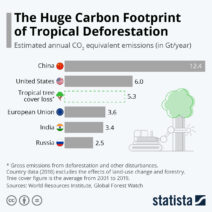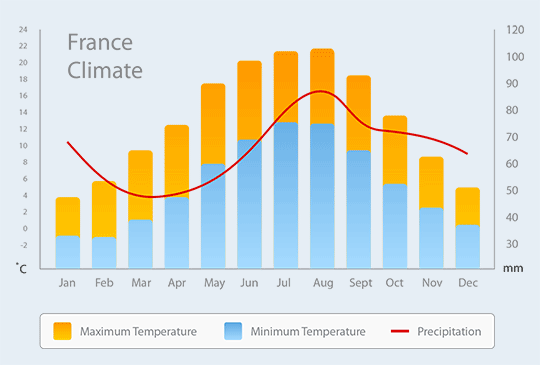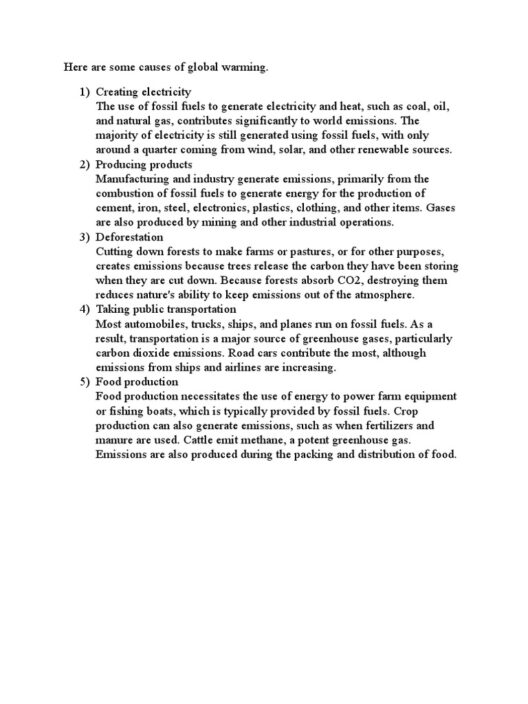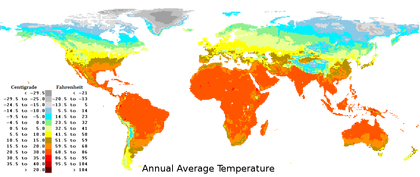France, known for its rich tapestry of culture, history, and cuisine, experiences a diverse array of climatic conditions throughout its expansive territory. The country is characterized by its multifaceted geography, which encompasses coastal regions, mountainous areas, and vast plains. This geographic diversity contributes significantly to the variations in climate across the nation, leading to distinct seasonal changes that offer unique experiences to both residents and visitors.
Understanding the climate in France requires a close examination of its major regions. From the sun-kissed beaches of the Mediterranean to the snow-covered peaks of the Alps, each area presents its unique weather patterns, temperatures, and seasonal nuances. Below, we explore the various climatic regions of France and the seasonal characteristics that define them.
Climate Zones of France
A closer look at France reveals several prominent climate zones, each influenced by geographical factors such as elevation, proximity to water bodies, and prevailing winds. Broadly, these can be categorized into four main climatic regions: continental, oceanic, Mediterranean, and mountainous.
Continental Climate: The Heart of France
The continental climate is predominantly found in the central and eastern regions of France, including cities like Paris, Lyon, and Strasbourg. This climate type is characterized by hot, humid summers and cold, dry winters. The average summer temperatures can soar to about 30°C (86°F), while winter temperatures may drop to a chilling -5°C (23°F) or lower. The distinct seasons in this region provide a dramatic transition from the blooming beauty of spring, with its flowering gardens and mild temperatures, to the stark, serene landscapes of winter, where frost and snow create a picturesque scene.
Oceanic Climate: A Gentle Embrace
The western coast of France, particularly areas like Brittany and Normandy, is blessed with an oceanic climate, defined by mild temperatures and significant precipitation. Summers are typically pleasant, averaging around 25°C (77°F), while winters remain temperate due to the moderating influence of the Atlantic Ocean. Rainfall is distributed fairly evenly throughout the year, leading to lush landscapes and vibrant ecosystems. The gentle climate fosters a rich agricultural tradition, supporting the cultivation of various crops, especially apples, which are famously transformed into cider in this region.
Mediterranean Climate: Sun-Drenched Shores
The southern coast of France, particularly the Côte d’Azur, boasts a Mediterranean climate distinguished by hot, dry summers and mild, wet winters. Average summer temperatures can exceed 30°C (86°F), captivating tourists and locals alike with brilliant sunshine and vibrant sea life. Winters, conversely, are quite mild, rarely falling below 5°C (41°F). This region’s climate not only cultivates a thriving tourism industry but also supports the growth of olives, citrus fruits, and vineyards, making it an economic hub for agriculture and wine production.
Mountainous Climate: Alpine Adventures
In stark contrast to the coastal areas, the mountainous regions of France, such as the French Alps and the Pyrenees, experience a mountainous climate. This zone is characterized by substantial temperature variations depending on altitude. Higher elevations can witness summer temperatures around 15°C (59°F) during the day while plummeting to freezing levels at night. Winters, however, are vastly different, with heavy snowfall turning these areas into prime destinations for winter sports. The robust seasonal changes attract outdoor enthusiasts, eager to indulge in skiing, snowboarding, and hiking in the breathtaking alpine terrains.
The Seasons of France: A Rhythmic Dance
An exploration of climate would be remiss without a discussion of the captivating seasons that grace France. Each season brings its own charm and set of activities, creating a rhythm that resonates with both nature and cultural celebrations.
Spring: A Flourishing Revival
Spring in France, spanning March to May, heralds a period of rejuvenation. The landscape bursts into color with blooming flowers, and cities come alive with various festivals celebrating art and culture. Temperatures begin to warm, with averages ranging from 10°C (50°F) in early March to 20°C (68°F) by late May. Outdoor markets, garden tours, and culinary fairs flourish as locals and tourists alike revel in the glorious weather.
Summer: An Abundance of Sun
From June to August, summer takes center stage, drawing throngs of tourists to the sun-drenched coastlines. Beach resorts fill with sunbathers, and rural areas celebrate harvests. The long, bright days, warm temperatures, and leisurely ambiance invite exploration of vineyards, charming towns, and breathtaking landscapes. Festivals and cultural events often characterize this vibrant season, showcasing the rich heritage of the nation.
Autumn: A Vibrant Transition
As summer wanes into autumn (September to November), France experiences a stunning transformation. The foliage transitions to a palette of rich reds, oranges, and yellows across the countryside and urban parks. The harvest season is in full swing, where wine festivals proliferate, marking the culmination of the winemaking process. Temperatures cool, creating a comfortable climate for outdoor activities and exploration.
Winter: A Crisp Chill
Winter blankets France from December to February, bringing varying conditions depending on the region. While the coastal areas enjoy milder temperatures and occasional rain, the mountainous regions embrace snow and cold weather that transforms these landscapes into winter wonderlands. Traditional holiday celebrations, including Christmas markets and winter festivals, create a festive atmosphere attracting visitors from around the globe. Snow sports enthusiasts flock to the slopes, indulging in the exhilarating adventures offered by the Alps and Pyrenees.
In conclusion, the climate in France provides a remarkable diversity that enhances the allure of its various regions. Whether one is captivated by the sunlit Mediterranean shores, the temperate coastlines, or the chilly embraces of the mountains, France presents an invitation to explore the rich interplay between its geography and climate. Each season, with its distinct character, unveils new experiences and opportunities to appreciate the natural beauty and cultural richness that this remarkable country has to offer.







